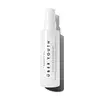What's inside
What's inside
 Key Ingredients
Key Ingredients

 Benefits
Benefits

 Concerns
Concerns

No concerns
 Ingredients Side-by-side
Ingredients Side-by-side

Water
Skin ConditioningSaccharide Isomerate
HumectantButylene Glycol
HumectantMirabilis Jalapa Extract
Skin ConditioningCurculigo Orchioides Root Extract
Skin ConditioningSodium Hyaluronate Crosspolymer
HumectantTamarindus Indica Seed Gum
Emulsion StabilisingLactobacillus/Eriodictyon Californicum Ferment Extract
Skin ConditioningPhospholipids
Skin ConditioningPropanediol
SolventGlycerin
HumectantPentylene Glycol
Skin ConditioningPolyacrylate Crosspolymer-6
Emulsion StabilisingCitric Acid
BufferingSodium Citrate
BufferingTrisodium Ethylenediamine Disuccinate
Polysorbate 20
EmulsifyingLeuconostoc/Radish Root Ferment Filtrate
AntimicrobialEthylhexylglycerin
Skin ConditioningChlorphenesin
AntimicrobialPhenoxyethanol
PreservativeWater, Saccharide Isomerate, Butylene Glycol, Mirabilis Jalapa Extract, Curculigo Orchioides Root Extract, Sodium Hyaluronate Crosspolymer, Tamarindus Indica Seed Gum, Lactobacillus/Eriodictyon Californicum Ferment Extract, Phospholipids, Propanediol, Glycerin, Pentylene Glycol, Polyacrylate Crosspolymer-6, Citric Acid, Sodium Citrate, Trisodium Ethylenediamine Disuccinate, Polysorbate 20, Leuconostoc/Radish Root Ferment Filtrate, Ethylhexylglycerin, Chlorphenesin, Phenoxyethanol
Water
Skin ConditioningButylene Glycol
HumectantGlycerin
HumectantPropanediol
SolventAlcohol
AntimicrobialPhenoxyethanol
PreservativeGlyceryl Tetrahydrofarnesylacetate
EmulsifyingSodium Citrate
BufferingPEG/PPG-200/70 Copolymer
SolventEthylhexylglycerin
Skin ConditioningAlcaligenes Polysaccharides
EmollientAlbatrellus Ovinus Extract
Skin ConditioningHydrangea Paniculata Flower/Fruit Extract
EmollientCitric Acid
BufferingOrobanche Rapum Extract
Skin ProtectingPotentilla Miyabei Callus Extract
Skin ConditioningCeramide Ng
Skin ConditioningWater, Butylene Glycol, Glycerin, Propanediol, Alcohol, Phenoxyethanol, Glyceryl Tetrahydrofarnesylacetate, Sodium Citrate, PEG/PPG-200/70 Copolymer, Ethylhexylglycerin, Alcaligenes Polysaccharides, Albatrellus Ovinus Extract, Hydrangea Paniculata Flower/Fruit Extract, Citric Acid, Orobanche Rapum Extract, Potentilla Miyabei Callus Extract, Ceramide Ng
Ingredients Explained
These ingredients are found in both products.
Ingredients higher up in an ingredient list are typically present in a larger amount.
Butylene Glycol (or BG) is used within cosmetic products for a few different reasons:
Overall, Butylene Glycol is a safe and well-rounded ingredient that works well with other ingredients.
Though this ingredient works well with most skin types, some people with sensitive skin may experience a reaction such as allergic rashes, closed comedones, or itchiness.
Learn more about Butylene GlycolCitric Acid is an alpha hydroxy acid (AHA) naturally found in citrus fruits like oranges, lemons, and limes.
Like other AHAs, citric acid can exfoliate skin by breaking down the bonds that hold dead skin cells together. This helps reveal smoother and brighter skin underneath.
However, this exfoliating effect only happens at high concentrations (20%) which can be hard to find in cosmetic products.
Due to this, citric acid is usually included in small amounts as a pH adjuster. This helps keep products slightly more acidic and compatible with skin's natural pH.
In skincare formulas, citric acid can:
While it can provide some skin benefits, research shows lactic acid and glycolic acid are generally more effective and less irritating exfoliants.
Most citric acid used in skincare today is made by fermenting sugars (usually from molasses). This synthetic version is identical to the natural citrus form but easier to stabilize and use in formulations.
Read more about some other popular AHA's here:
Learn more about Citric AcidEthylhexylglycerin (we can't pronounce this either) is commonly used as a preservative and skin softener. It is derived from glyceryl.
You might see Ethylhexylglycerin often paired with other preservatives such as phenoxyethanol. Ethylhexylglycerin has been found to increase the effectiveness of these other preservatives.
Glycerin is already naturally found in your skin. It helps moisturize and protect your skin.
A study from 2016 found glycerin to be more effective as a humectant than AHAs and hyaluronic acid.
As a humectant, it helps the skin stay hydrated by pulling moisture to your skin. The low molecular weight of glycerin allows it to pull moisture into the deeper layers of your skin.
Hydrated skin improves your skin barrier; Your skin barrier helps protect against irritants and bacteria.
Glycerin has also been found to have antimicrobial and antiviral properties. Due to these properties, glycerin is often used in wound and burn treatments.
In cosmetics, glycerin is usually derived from plants such as soybean or palm. However, it can also be sourced from animals, such as tallow or animal fat.
This ingredient is organic, colorless, odorless, and non-toxic.
Glycerin is the name for this ingredient in American English. British English uses Glycerol/Glycerine.
Learn more about GlycerinPhenoxyethanol is a preservative that has germicide, antimicrobial, and aromatic properties. Studies show that phenoxyethanol can prevent microbial growth. By itself, it has a scent that is similar to that of a rose.
It's often used in formulations along with Caprylyl Glycol to preserve the shelf life of products.
Propanediol is an all-star ingredient. It softens, hydrates, and smooths the skin.
It’s often used to:
Propanediol is not likely to cause sensitivity and considered safe to use. It is derived from corn or petroleum with a clear color and no scent.
Learn more about PropanediolSodium Citrate is the sodium salts of citric acid. In skincare, it is used to alter pH levels and acts as a preservative.
Its main functions are to maintain the pH of a product and neutralize metal ions.
The acidity of our skin is maintained by our glands and skin biome; normal pH level of skin is slightly acidic (~4.75-5.5).
Being slightly acidic allows our skin to create an "acid mantle". This acid mantle is a thin barrier that protects our skin from bacteria and contaminants.
Learn more about Sodium CitrateWater. It's the most common cosmetic ingredient of all. You'll usually see it at the top of ingredient lists, meaning that it makes up the largest part of the product.
So why is it so popular? Water most often acts as a solvent - this means that it helps dissolve other ingredients into the formulation.
You'll also recognize water as that liquid we all need to stay alive. If you see this, drink a glass of water. Stay hydrated!
Learn more about Water